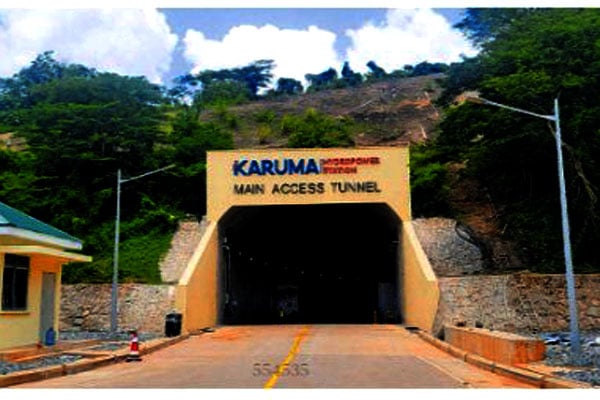Karuma residents’ agonising wait for govt compensation

The main access to the underground tunnel at Karuma dam. PHOTO/TOBBIAS JOLLY OWINY
What you need to know:
- In 2010, the Ministry of Energy and Mineral Development (MEMD) took over the project from NORPAK Power Ltd, a Norwegian firm that initially intended to build a power dam at Karuma.
Mr Benjamin Mugenyi goes through a heap of files at his office located in Karuma Town Council, Kiryandongo District, in search of the one containing records of more than 100 people he claims were not compensated by the government during the construction of Karuma Hydropower Dam.
Mr Mugenyi is also the chairperson of Karuma Hydropower Local Community Organisation (KAHLCO), which was started in 2012 by 119 people whose land was taken for the power project more than 12 years ago.
Mr Mugenyi says he was compensated for only three of his five plots and that he has been chasing after the rest since 2013.
“I had five plots of land, three were compensated, and two were not. When I complained, they told me that those plots had disputes involving other parties,” he says.
According to him, the compensation process was marred by undervaluation and payments to ghost claimants.
“The rates (money) paid for the plots were unequal, and worst of all, land in other districts such as Oyam and Nwoya was valued at higher rates than those in Kiryandongo,” he said.
In 2010, the Ministry of Energy and Mineral Development (MEMD) took over the project from NORPAK Power Ltd, a Norwegian firm that initially intended to build a power dam at Karuma.
Mr Mugenyi says confusion over compensation started once the ministry sidelined their organisation and started dealing with individual land owners directly.
“KAHLCO, initially formed to represent the affected communities, was excluded from the compensation process, with local government officials. Instead of involving local leaders and the organisation, they would sneak into the communities without our knowledge and that is when they took advantage of the locals,” he says.
The affected landowners are residents of Karuma and Awoo villages in Karuma Town Council, Kiryandongo District, and Akuridia and Nora villages in Kamdini Sub-county, Oyam District.
Mr Mugenyi, the KAHLCO chairperson, said when the government bought off the hydropower concept from NORPAK Ltd, the Ministry of Energy came up with another project map in which they excluded up to 122 acres from the project.
In July, the group petitioned Parliament, seeking urgent redress. Last month, the Deputy Speaker of Parliament, Mr Thomas Tayebwa, gave the Energy Ministry one month to present before the House how it arrived at the Resettlement Action Plan (RAP) with the landowners in 2011.
Mr Tayebwa also tasked the same ministry to consider a supplementary budget to enable it to resettle and compensate the affected landowners.
The proposed budget for resettlement of 119 people displaced by the power project is Shs28 billion, of which Shs4.2 billion is for compensation.
However, Ms Phiona Nyamutoro, the State Minister for Energy, said they were engaging the National Environment Management Authority (Nema) and Nwoya District to fast-track the necessary approvals to construct houses for resettlement.
“The ministry is working tirelessly to see to it that the project-affected persons are resettled and we call upon the support of Parliament in seeing that our budgeting for 2025/2026 is prioritised during allocations to enable us to have this issue settled,” Ms Nyamutoro said.




